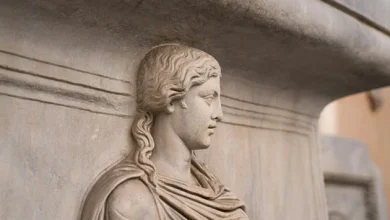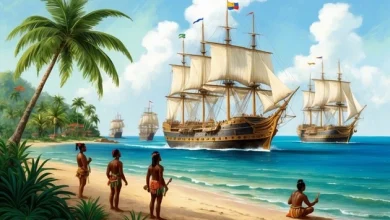5 myths of antiquity based on real events

The myths and legends of the world’s peoples are sometimes more than simply fiction. They have altered considerably and gained new features during the decades, and perhaps decades, of their existence; certain major people or locations may have been given new names and titles. Even if one desired to, it is frequently difficult to go to the original.
However, there are instances when an old myth proves to be founded on true occurrences and aids science in revising its discoveries.
Hanging Gardens of Babylon
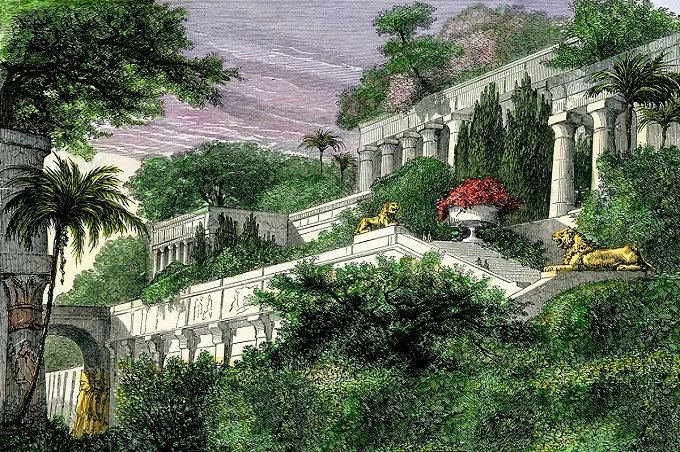
The Hanging Gardens of Babylon are one of the ancient world’s seven wonders and the only one whose exact site has yet to be determined. According to Greek historians, it was an intricate engineering complex in Babylon, consisting of tiered gardens with many different trees, plants, and flowers. The gardens are said to have been created by Nebuchadnezzar II; however, this traditionalism adds to the confusion.
The truth is that Semiramis had nothing to do with the monarch. Semiramis was the queen of Assyria, a legendary figure who did not exist; hence only a few people knew about her. However, Queen Shammuramat, of Babylonian heritage, was her true model.
The connection between Babylon and Assyria at their marriage may be likened with Babylon serving as the cultural capital. On the other hand, Assyria was much more powerful militarily and politically. Riots, uprisings, and brutal suppressions occurred occasionally, and the Assyrian monarchy governed the union despite the official union.
For this reason, the Babylonian Shammuramat was most likely attempted to be converted into the mythological Assyrian Semiramis. Their biggest resemblance is that they both governed alone, and a woman monarch is only discovered once per 1,000 years in ancient history, which is not a truth. Aside from that, they were both rulers of the same realm. Other parallels exist: the actual Shammuramat ascended to the kingdom following her husband’s death and reigned for five years. Semiramis’ husband gave her five days to reign over Asia, according to historian Dinon, and she quickly ordered her guards to assassinate him. To get the latest stories, install our app here
In summary, the Hanging Gardens of Shammuramat were erected during the reign of the queen and are considered one of the world’s marvels. If Nebuchadnezzar II built them, the tale gets much more convoluted. After all, this monarch reigned for over two centuries.
Lake crater
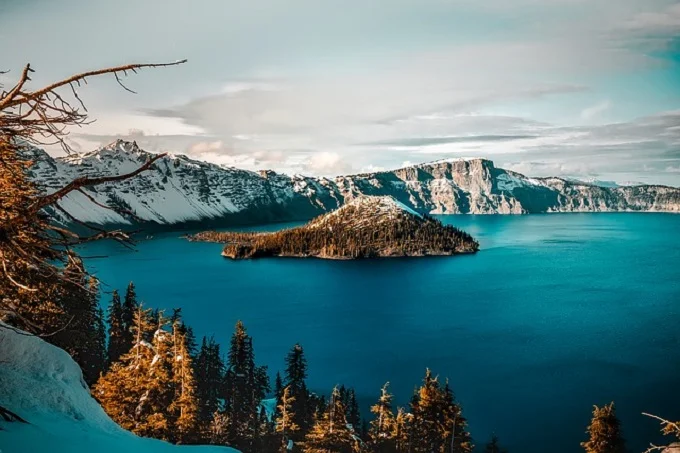
Following independence, the former British colonies merged to establish the United States of America. The former colonies’ area accounted for about 10-15% of the current-day region, with only the east coast populated. The westward expansion started soon after. The Hudson Bay Company first saw the Klamath tribe in 1826. This was a small tribe that lived in the now Oregon area. The indigenous narrated the account of Crater Lake’s origin, which started a cultural exchange.
It was not only impossible to swim in the lake but to stare at it, according to their interpretation, since it would disturb the wrathful deity who slept underneath it. This is how the narrative goes. An epic war between the rulers of the lower and above realms resulted in creating the lake. The specific nature of the struggle is unknown, but the point is that Llao, the monarch of the lower world, stood on Mount Mazama, while Skell, the ruler of the higher world, stood on Mount Shasta. They began hurling massive fire stones at each other, and darkness descended around them. Mount Mazama was destroyed in the battle, and Llao was forced to return beneath. Soon after, the triumphant deity of the upper world commanded rain to fall, filling the mountain’s depression. That is how the lake was formed. To get the latest stories, install our app here
Another great narrative from the Indians, but it’s backed up by geological evidence this time. The Mazama volcano erupted around 7,700 years ago and collapsed, leaving the lake in its crater. The explosion may have been observed by the first people who arrived in the area about 14,000 years ago.
Tower of Babel
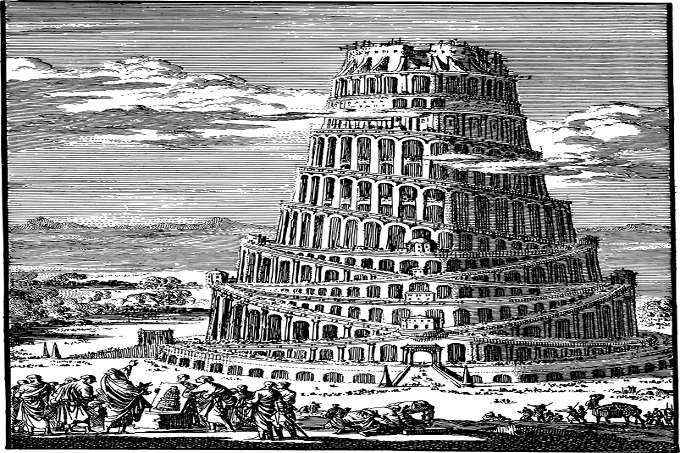
The biblical account of the Tower of Babel talks of a proud nation. Following the Deluge, a single person who spoke the same language represented all of humanity. To “create a reputation for themselves,” they built the city of Babylon and started construction on a tower that would reach the skies. To get the latest stories, install our app here
As a result, they compared themselves to God, who grew enraged and caused everyone to speak in various languages. Consequently, they could not communicate with one another, failed to construct the tower, and dispersed around the globe.
It was common practice in ancient Mesopotamia, particularly in Babylon, to construct tower temples. They were referred to as ziggurats. Ceremonies and astronomical observations were held on their flat summits. The tallest ziggurat is Etemenanki (which means “home where heaven and earth meet”). The structure stands at 91 meters in height. Although the actual construction period is uncertain, it is believed to have existed throughout Hammurabi’s reign. You may recognize the name by the same name, and it was formerly thought to be the oldest ancient system of laws. It dates from the eighteenth century BC. Babylon, along with Etemenanki, was destroyed in 689 BC, but it was rebuilt by Nebuchadnezzar II, as previously described. The biblical tale is most likely based on this practice. To get the latest stories, install our app here
Babylon regained its power under Nebuchadnezzar II. Many foreigners lived in the city; some came in pursuit of a better life, while others were forced into slavery. These individuals spoke various languages yet collaborated to erect the tower. The forcefully expelled Jews may have mistaken the tower in the process of being constructed for one that had been destroyed during the fall of the Kingdom of Judah.
Molau and Tanovo
Fiji is an island nation in the Pacific Ocean with two major islands and a slew of smaller ones. Myths and cultural memory have defeated scientific investigation. This time, the narrative is about a regional clash between the gods.
Tanovo was the ruler of Ono Island, located in the archipelago’s southern region. He was a rather ordinary nobleman who enjoyed strolling down the beach to watch the sunset in the evenings. In general, he lived and relished his idyllic existence. However, his enemy Molau, the master of the volcano, had built up the mountain, blocking the sunset vista. There were no lengthy discussions back then, and no objections were voiced. Tanovo started splitting the volcano by weaving giant baskets of coconut fibers and filling them with soil. Tanovo ran, scattering soil from his baskets in the process. Despite the fact that the combat was hard, the volcano king was victorious. To get the latest stories, install our app here
Scientists first assumed it was a real volcanic explosion when scientists first heard about this history, but the statistics didn’t line up. The Nabukelevu volcano erupted roughly 50,000 years ago when the islands were inhabited for about 3,000 years. The islanders’ tale was just that: a history for a long time. Workers discovered old pieces of pottery buried behind a meter-high layer of volcanic ash while excavating a road a few years ago. The identical traces were later discovered on two tiny islands in the area, the exact ones that had fallen out of Tanovo’s basket. This was unequivocal proof that the volcano had been erupting for almost 3000 years, during which time humans had lived on the island.
The sunken Kingdom of Krishna

There are many myths about drowned cities, islands, even continents. Of course, the most well-known of them is the legend of Atlantis. One would want to discover genuine proof of that but haven’t been able to do so so far. Because Plato’s narrative is just that, let us go to another source on the opposite side of the world.
Krishna is one of the most prominent gods in Hindu mythology. He was the Yadava tribe’s chief. Krishna’s initial city was Mathura, a suburb of India’s capital. Jarasanda, the enraged monarch of a neighboring state, assaulted Krishna seventeen times but was always beaten. Nonetheless, thousands died in these fights, so Krishna decided to move.
He constructed a new city on the island in only one day, which he called Dwaraka. According to ancient Sanskrit literature, the monarch of another realm then invaded from the skies. Many buildings were destroyed during the conflict, including the main palace. Krishna was able to fight back, but he chose to leave his new dominion, and the city and the island were submerged. To get the latest stories, install our app here
Dr Rao, an Indian archaeologist, found ancient Dwaraka in 1982. The excavations started near the present city of the same name, on the seashore. An old wall stretching into the water was discovered first, followed by a slew of additional artifacts and evidence of wrecked constructions on the seabed. The artifacts were discovered around the 15th and 16th centuries BC. The ancient city’s ruins are now buried at a depth of 40 meters.

